 "hsv" (hsv)
"hsv" (hsv)
08/24/2015 at 18:50 • Filed to: None
 15
15
 52
52
 "hsv" (hsv)
"hsv" (hsv)
08/24/2015 at 18:50 • Filed to: None |  15 15
|  52 52 |
The recent increase in interest surrounding motorsport in Japan, more specifically Super GT, has been refreshing to see. The once unknown and largely ignored face of Japanese motorsport is finally breaking through the masses, but it is very much just the tip of the iceberg. After Stef stumbled across the very wonderful Mirage Cup, I thought it would be good to delve a little deeper into a very important era of motorsport in Japan, and shed light upon some lost gems.
Setting The Scene
As we left the 1980s, we left behind a decade of great growth and increasing international presence. Japanese teams were beginning to find their feet in Europe, and manufacturers were looking to make a name for themselves. The number of one-make championships was rapidly increasing nationally, and established series were experiencing influxes of growth. As we entered the year of 1990, we did so on a slightly disappointing note. The longstanding Grand Champion series folded at the end of 1989, something that was somewhat inevitable - but a hugely important part of national motorsport was gone for good.
Single Seaters
The single seater scene has always fluctuated in Japan, with a variety of championships coming and going.
The flagship series, as always, was the Japanese F3000 Series. The death of GC did end up doing good, in actually boosting the F3000 grid slightly - over the years, more international drivers dipped their toes in the action, and it proved as a very useful tool in the ladder to F1. In 1996, F3000 was renamed Formula Nippon - which, of course, is now known as Super Formula.
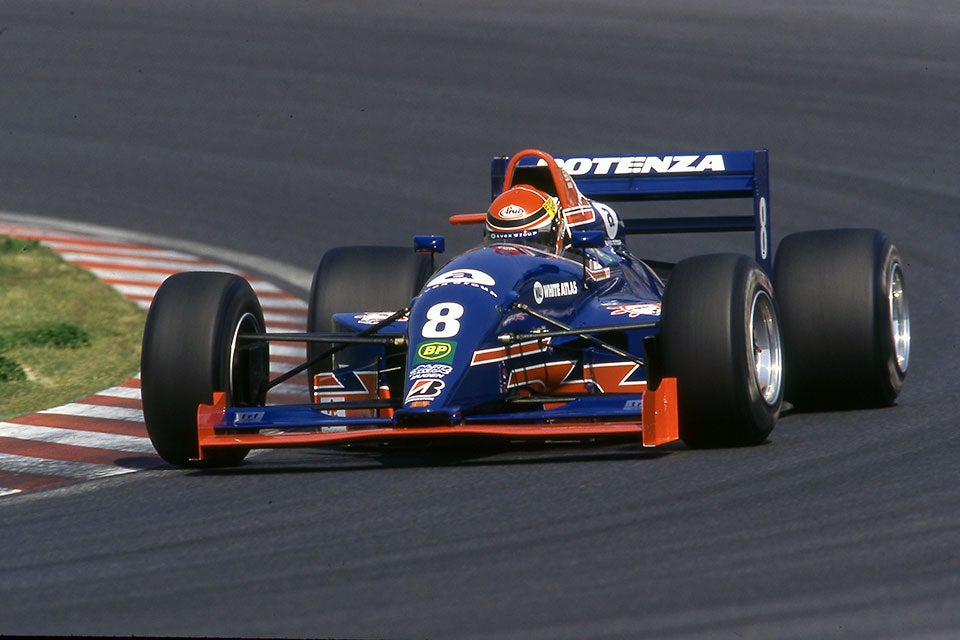
The next obvious championship to look at is Formula 3 - just as Formula Nippon did, it provided a key stepping stone for aspiring drivers of all disciplines. If this can highlight anything, it would be how Japanese motorsport was perceived back then - it was a true growing force to be reckoned with, and the progress made was an incredibly enticing prospect to a young hopeful.
Open wheel racing in Japan has long been characterised by the unique smaller series. By far and away the most successful championship was Formula Toyota, starting in 1990 and lasting for a further 16 seasons. Not to be outdone, Mitsubishi partnered with the JAF to run Formula Mirage, running Van Diemen and Reynard FF2000 cars fitted with the 4G63 DOHC unit. This ultimately proved less successful, folding after just 6 seasons. Formula Crane 45 was altogether a more offbeat prospect, however - and it proved a flop. 30 Sabre FC45s were ordered to compete solely at the Autopolis circuit, pitting American drivers against Japanese drivers. The grand opening proved a hit, and a series was then commissioned. There was such a lack of interest that it only lasted 2 short seasons, with all assets subsequently sold off when Autopolis went bankrupt.
To end on a positive note, however, 1999 saw the start of Formula Dream, which led to Formula Challenge Japan - backed heavily by the Japanese big three. The formula was well planned and viable, which gave a solid life. Eventually, it spawned the now booming Japanese F4 series.
GT/Sportscars
The early 1990s was dominated by the final flourish of the JEC, then called Long Distance Series, sanctioned by the Fuji-based FISCO group. Beginning life as a mix of Group 6 and touring cars, it gradually opened itself up to the obvious choice of Group C and IMSA GTP. Naturally, the series vanished around the same time as Group C did on an international level. The most memorable series however was the JSPC, which also collapsed in 1992 - this meant that 1993 could see a new dawn in sportscar racing.
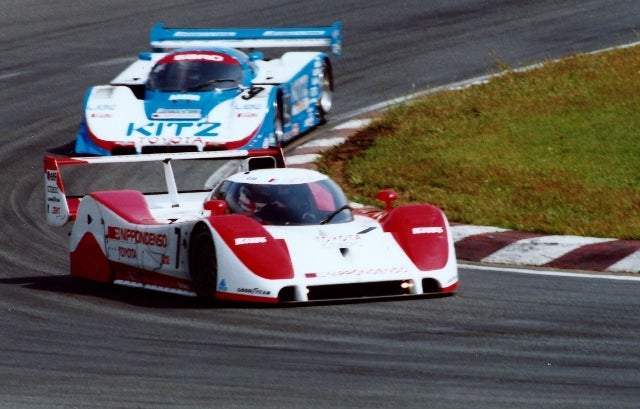
The JAF and its subsidiary, the GT-A, picked up the pieces to form the Zen Nihon GT Senshuken - commonly known as JGTC. Even though the first season was an odd mix of exhibition races, the eye on parity and providing a sustainable environment for competition proved invaluable. The big three were quickly involved with full factory efforts, which formed the basis for Super GT.
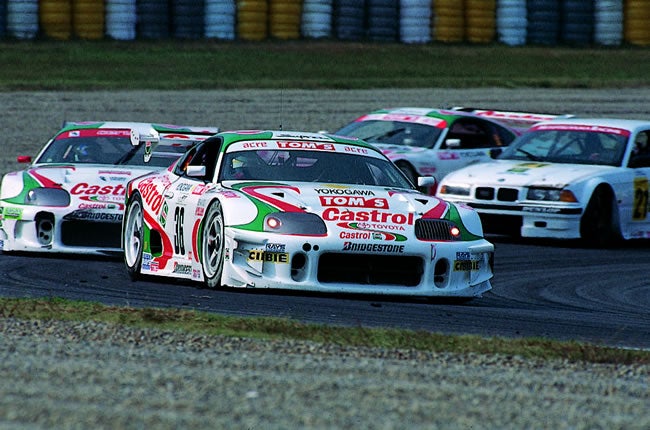
Finally, the impact that Super Taikyu has had on Japanese motorsport can’t be overlooked. Running strongly since 1991, it gave Group N and production-based racing the kick it needed to become truly successful.
Touring Cars/One-Make Racing
Touring cars are a staple for any country heavily involved in motorsport. However, the 1990s saw something rather odd happen in Japan - whilst Super Touring reinvigorated most championships, the costs it presented to the teams forced manufacturers into an easy decision on switching to JGTC. The final few years of Super Touring were also quite interesting, since the lack of competition actually forced rule changes which had been pressured by fans - something that can be considered a very recent phenomenon. The series couldn’t recover once Toyota’s remaining factory effort began to dominate proceedings, and ever since then, Japan has struggled to rekindle a passion for touring cars.
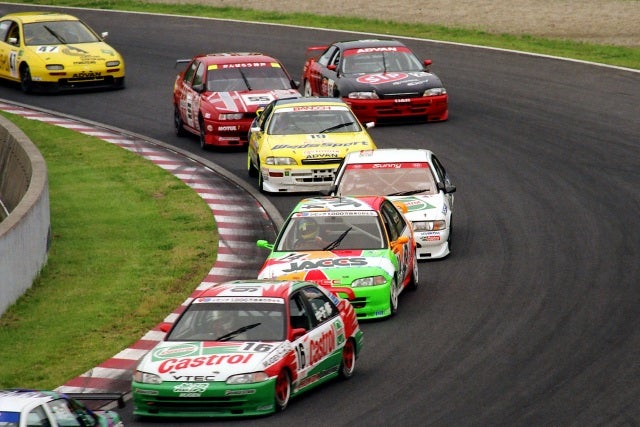
Finally, a mention needs to be given to the many great one-make championships that graced the support packages of many events during the 1990s.
Fuji Freshman Series is largely forgotten, yet it’s hard to see why - the AE86 formed the basis of the championship for several years, with the W20 MR2 taking over from 1993, and it provided consistently good action.
Nissan fielded three strong championships - the March Cup and Super Silvia Series providing a stepping stone for the JGTC or JTCC, and the Saurus Cup, from which many cars are still used today for motorsport tuition.
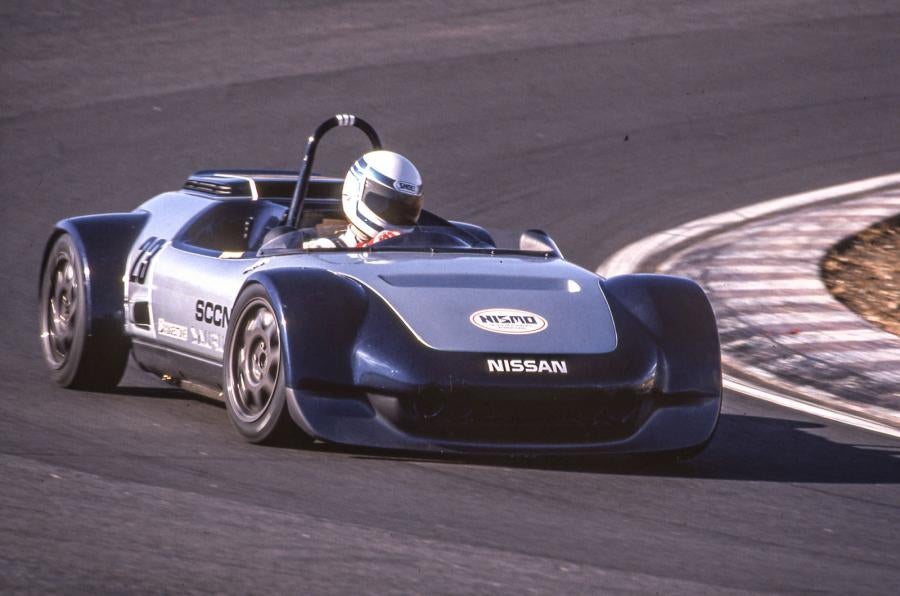
The Corolla Sprinter cup was an arguably more successful platform for AE86 competition, with Toyota also starting a Net’z cup in 1999 - the latter proving moderately successful too, continuing for a further 11 years.
Last but not least, the Mistubishi Mirage cup provided a similar stepping stone to JTCC as the March Cup. The series was dropped in 1993, having had most of its success during the 1980s, but it was highly entertaining nevertheless.
Hopefully, that explains some of the series that helped motorsport in Japan boom during the 1990s. Whilst some faltered, others managed to push Japanese national motorsport to international acclaim - firmly marking them as a true force to be reckoned with in motorsport.
 bryan40oop
> hsv
bryan40oop
> hsv
08/24/2015 at 22:38 |
|
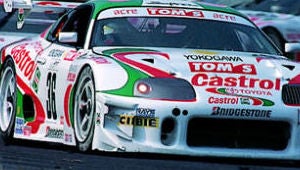
I’m not a big supra guy, but I love that car. 4 cylinder turbo right?
 hsv
> bryan40oop
hsv
> bryan40oop
08/25/2015 at 07:44 |
|
Single turbo 1998 cc DOHC 3S-GT Evo L4 4v.
 SaveTheClassics
> hsv
SaveTheClassics
> hsv
08/26/2015 at 14:37 |
|
First year (maybe two years?) they ran a 2.1L 4cyl turbo, then the 3S, then a V8.
 SantaRita
> bryan40oop
SantaRita
> bryan40oop
08/26/2015 at 14:50 |
|
i was going to call bs as they’re 6 cylinders...but you’re absolutely right. very cool not so minor detail i never knew!
“During the 1995 season Toyota entered a fleet of their race tuned Supra GT’s into this popular event. Packed into the Supra look alike body shell was Toyota’s latest racing technology. A 2,140cc, 4-cylinder turbocharged powerplant was taken from Toyota’s Eagle Mk.III racing machine, which was active during the ‘93 IMSA races in the U.S.A. The X-Trac developed sequential 6-speed gearbox efficiently transmitted this engine’s awesome power to the rear wheels. Four wheel double wishbone suspension components were taken from another Toyota prototype racer, the TS010. The body shell was extensively modified to obtain even better aerodynamics. Additional air intakes and outlets, oversized fenders and a huge rear spoiler, gave its massive silhouette and even more aggressive appearance.”
 hsv
> SaveTheClassics
hsv
> SaveTheClassics
08/26/2015 at 14:52 |
|
‘96 at Suzuka was the JZA80 debut. Used the 3S until the Techno Craft V8 appeared at Aida in ‘02.
 MrMcQueen21v2
> hsv
MrMcQueen21v2
> hsv
08/26/2015 at 14:52 |
|
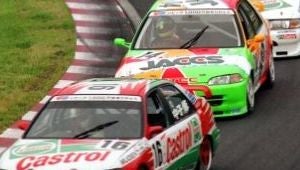
The ricer wet dream. This just cracks me up, I realize its Touring Cars, but I’ve never see a legit Civic racecar before.
 JayHova
> hsv
JayHova
> hsv
08/26/2015 at 14:53 |
|
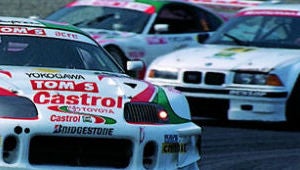
That battered bimmer is a bit of an oddball amongst those Supras.
On a sidenote: DAT CASTROL LIVERY!
 BansheeNorn
> hsv
BansheeNorn
> hsv
08/26/2015 at 14:56 |
|
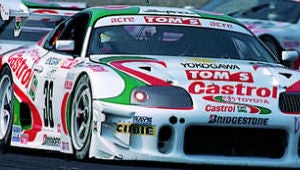
i wish tamiya made a version of the newer castrol supra.
*sigh*
 SaveTheClassics
> hsv
SaveTheClassics
> hsv
08/26/2015 at 14:59 |
|
Two things... I’ve seen one in person running the 2.1L motor, and two, even Wikipedia confirms it:
https://en.m.wikipedia.org/wiki/Toyota_Su…
 hsv
> MrMcQueen21v2
hsv
> MrMcQueen21v2
08/26/2015 at 14:59 |
|
You mustn’t follow a lot of motorsport then. The Civic is a tremendous race car. It’s one of the most successful touring car family lines in racing history, very hard to think of a championship it hasn’t had success in.
 hsv
> SaveTheClassics
hsv
> SaveTheClassics
08/26/2015 at 15:05 |
|
I wasn’t saying you were wrong, just giving the details. ‘95 was the toe-dipping effort, the 4 cylinders from that year were GT2 eligible.
 Declan Hackett
> hsv
Declan Hackett
> hsv
08/26/2015 at 15:12 |
|
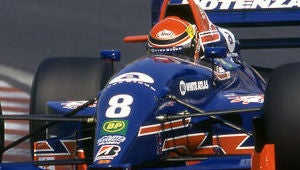
Don’t forget - there was a shitload of money floating around back then for any half-decent gaijin willing to relocate! After all, when Eddie Irvine was offered an F1 seat for 1994 on the back of two end-of-season outings for Jordan, he turned EJ down because he didn’t fancy the pay cut it meant!
 SaveTheClassics
> hsv
SaveTheClassics
> hsv
08/26/2015 at 15:15 |
|
Fair enough. I was at a little auto shop outside of Yokohama several years ago buying some memorabilia (wheel from one of the Raybrig NSX’s) and they had one of the original JZA80 JGTC cars running the 2.1L. I always thought they only had the 3S and the V8, but the shop owner told me about the history.
 hsv
> Declan Hackett
hsv
> Declan Hackett
08/26/2015 at 15:16 |
|
There still is - it’s little wonder that F1 reserve drivers are taking Super GT seats, and guys like Buller are choosing SF over the likes of World Series.
 hsv
> SaveTheClassics
hsv
> SaveTheClassics
08/26/2015 at 15:18 |
|
How much did you get the Kunimitsu wheel for? Wouldn’t think it’d be cheap...
 MHunter905
> SantaRita
MHunter905
> SantaRita
08/26/2015 at 15:24 |
|
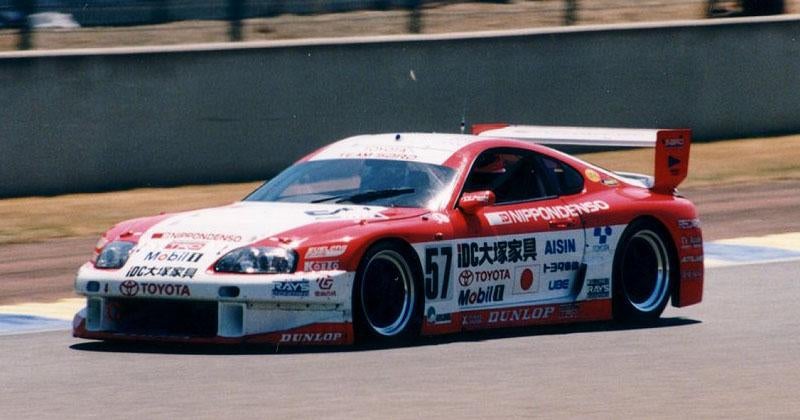
Toyota even modified one of these to go to LeMans in 1996. I don’t think it did very well but 1996 was a very experimental year for Le Mans entries.
 Pdb
> hsv
Pdb
> hsv
08/26/2015 at 15:31 |
|
Yep, Civic has been rocking BTCC for years
http://www.btcc.net/2015/03/17/hon…
 Le Monstre
> hsv
Le Monstre
> hsv
08/26/2015 at 15:36 |
|
Damnit, beat me to it. It always was odd to me watching the introduction of GT3 that there was a 4 cylinder instead of a 6, and wasn’t until not long ago I found out in fact they ran that son of a bitch of a motor. The Gurney Eagle cars were pretty fast with those.
 techinsanity2011
> BansheeNorn
techinsanity2011
> BansheeNorn
08/26/2015 at 15:43 |
|
I kinda like the song the japanese broadcasters of f1 coverage used during their broadcasts, they performed it live during the Japanese GP in 1997.
 SaveTheClassics
> hsv
SaveTheClassics
> hsv
08/26/2015 at 15:45 |
|
35,000en, which at the time I believe was right around $350. I think the rate was around 100:$1 then, but can’t remember for sure.
 hsv
> SaveTheClassics
hsv
> SaveTheClassics
08/26/2015 at 15:49 |
|
I’d say that’s a good price, considering far less iconic backmarker F1 wheels go up for almost twice that. There are also a lot of crazed Honda fans who’d do anything for something so beautiful and perfect ~cough*me*cough~.
 Autolegend86
> bryan40oop
Autolegend86
> bryan40oop
08/26/2015 at 15:54 |
|
Im gonna go on a limb and say that GT500/GT300 vehicles match their production counterparts about as much as Group B rally cars did.
 SaveTheClassics
> hsv
SaveTheClassics
> hsv
08/26/2015 at 15:55 |
|
The wheel was actually a “consolation prize” in a sense. I went there to buy a race used helmet from Orido, but he wouldn’t negotiate enough to get the price where I wanted, so we looked around at what else he had. This wheel was actually sitting under a bunch of stuff in a pile in the back. I still haven’t decided a good way to display it in my current garage, it’s so wide that it sticks out too far anywhere I put it. Thinking about suspending it from the ceiling somehow.
 hsv
> SaveTheClassics
hsv
> SaveTheClassics
08/26/2015 at 16:00 |
|
I have a spare kidney and other various probably not that vital organs I would be willing to trade for.
 Benson1990
> hsv
Benson1990
> hsv
08/26/2015 at 16:16 |
|
The only thing sexier than ‘90s BTCC, ‘90s JTCC.
 bryan40oop
> Autolegend86
bryan40oop
> Autolegend86
08/26/2015 at 16:18 |
|
Nope. I thought the same at first. see http://oppositelock.kinja.com/i-was-going-to…
 hsv
> Benson1990
hsv
> Benson1990
08/26/2015 at 16:23 |
|
All of Class 2 is very beautiful. As beautiful as JTCC was though, the unfortunate circumstances that befell it were very sad indeed.
 Autolegend86
> bryan40oop
Autolegend86
> bryan40oop
08/26/2015 at 16:36 |
|
I know about those cars in the same way i know about the SARD modified MR-2. Compared to a production car, GT500 spec allowed far more mods. Today, the GT500 cars are the fastest GTs in the world.
 VanillaChinchilla
> bryan40oop
VanillaChinchilla
> bryan40oop
08/26/2015 at 16:38 |
|
its the paint, and something about gran turismo nostalgia haha
 Grant Leavitt
> hsv
Grant Leavitt
> hsv
08/26/2015 at 16:43 |
|
Don’t forget 1991 when Mazda’s Group C racer 787B won the prestigious 24 Hours of Le Mans. I only mentioning this as it was a Japanese manufacturer that won the race. I realize the point of the article was to show Motorsport INSIDE Japan in that decade.
 bryan40oop
> Autolegend86
bryan40oop
> Autolegend86
08/26/2015 at 16:44 |
|
GT500 cars are basically like nascar. Share virtually nothing with the production variants.
 Tareim - V8 powered
> hsv
Tareim - V8 powered
> hsv
08/26/2015 at 17:20 |
|
what happened?
 hsv
> Tareim - V8 powered
hsv
> Tareim - V8 powered
08/26/2015 at 17:22 |
|
“...whilst Super Touring reinvigorated most championships, the costs it presented to the teams forced manufacturers into an easy decision on switching to JGTC. The final few years of Super Touring were also quite interesting, since the lack of competition actually forced rule changes which had been pressured by fans - something that can be considered a very recent phenomenon. The series couldn’t recover once Toyota’s remaining factory effort began to dominate proceedings, and ever since then, Japan has struggled to rekindle a passion for touring cars.”
 MediaGuy_JBanner
> hsv
MediaGuy_JBanner
> hsv
08/26/2015 at 17:40 |
|
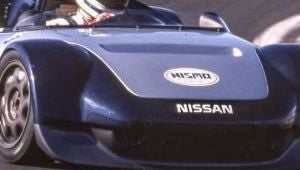
Kinda neat looking. It’s like a full-body Formula Ford. Wonder what engine it used from Nissan.
 hsv
> MediaGuy_JBanner
hsv
> MediaGuy_JBanner
08/26/2015 at 17:44 |
|
MA10E SOHC 4-pot. 69 horsepower.
 Joneez
> hsv
Joneez
> hsv
08/26/2015 at 17:58 |
|
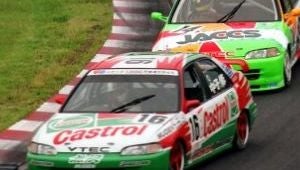
Yo!
 MediaGuy_JBanner
> hsv
MediaGuy_JBanner
> hsv
08/26/2015 at 18:06 |
|
Interesting, further looking into it says it also used a similar transmission as the March R. Also, on the Saurus: “The Nissan Saurus was a concept car designed by Nissan Motors and unveiled at the 1987 Tokyo Motor Show . [2] [3] [4] It was a roadster featuring a 2.0-liter turbocharged engine, [1] with bulging fenders and a design reminiscent of the Lotus Seven .” - via Wikipedia
 hsv
> MediaGuy_JBanner
hsv
> MediaGuy_JBanner
08/26/2015 at 18:09 |
|
The Saurus Jr is much nicer to look at IMO.
 MrMcQueen21v2
> hsv
MrMcQueen21v2
> hsv
08/26/2015 at 20:08 |
|
I suppose I mean that generation Civic, I’ve never seen one as a racecar. And I watch quite a bit of racing.
 SteveFB91
> hsv
SteveFB91
> hsv
08/26/2015 at 20:29 |
|
Man, the ‘lopnik is on point with their stories today!
 hsv
> SteveFB91
hsv
> SteveFB91
08/26/2015 at 21:35 |
|
I am but a mere mortal. A nerdy, mere mortal.
 Margin Of Error
> hsv
Margin Of Error
> hsv
08/27/2015 at 00:02 |
|
Great article, has this been front paged yet ?
 Apex Attitude
> MrMcQueen21v2
Apex Attitude
> MrMcQueen21v2
08/27/2015 at 00:13 |
|
There’s an utter ton of EG civic race cars. Look up 90’s JTCC Civics. Proper engineering going into those to make them as fast as they were.
 Jon Player Specialist
> hsv
Jon Player Specialist
> hsv
08/27/2015 at 00:40 |
|
I was kinda hoping you'd mention some of the foreign drivers that came up in Japan at that time, Jacques villeneuve, Eddie Irvine, Jeff krosnoff, it was once a real hotbed for driver development.
 Jon Player Specialist
> MediaGuy_JBanner
Jon Player Specialist
> MediaGuy_JBanner
08/27/2015 at 00:44 |
|
Yeah, what is that? I like it.
 205_Tsixteen
> hsv
205_Tsixteen
> hsv
08/27/2015 at 00:45 |
|
Ah, the 90’s.
JGTC that day also have the Mclaren F1 running along with those Supras, NSXs and Skylines. And also Vipers and F355s along the way.
And also the JTCC is one hell of a series. Seen some BMI/Hot Version videos about them, and I was amazed. How about telling the tales of N2 Cup and more one make races?
 Tareim - V8 powered
> hsv
Tareim - V8 powered
> hsv
08/27/2015 at 07:07 |
|
so JGTC went through pretty much exactly what BTCC did then
 Bechern
> hsv
Bechern
> hsv
08/27/2015 at 07:07 |
|
Little off topic, but not to mention the commentaries/announcer of some of the Formula Nippon races back in the 90s!
His name is Toshihiro Suzuki
 Farabomb
> MrMcQueen21v2
Farabomb
> MrMcQueen21v2
08/27/2015 at 09:40 |
|
Honda Challenge. You’ll see lots of them.
 MediaGuy_JBanner
> Jon Player Specialist
MediaGuy_JBanner
> Jon Player Specialist
08/27/2015 at 10:34 |
|
A Nissan Saurus, Jr
 bmw325_num99
> hsv
bmw325_num99
> hsv
08/27/2015 at 18:22 |
|
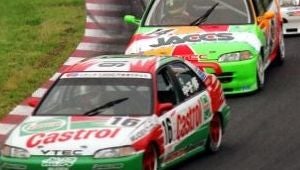
Im not a Honda guy but these sedans are awesome.
 deedok
> hsv
deedok
> hsv
08/31/2015 at 23:31 |
|
Just look up Jeff Krosnoff, Eddie Irvine, Heinz-Harald Frentzen, Roldand Ratzenberger, Geoff Lees and Ross Cheever to name a few who went to Japan to further their racing careers